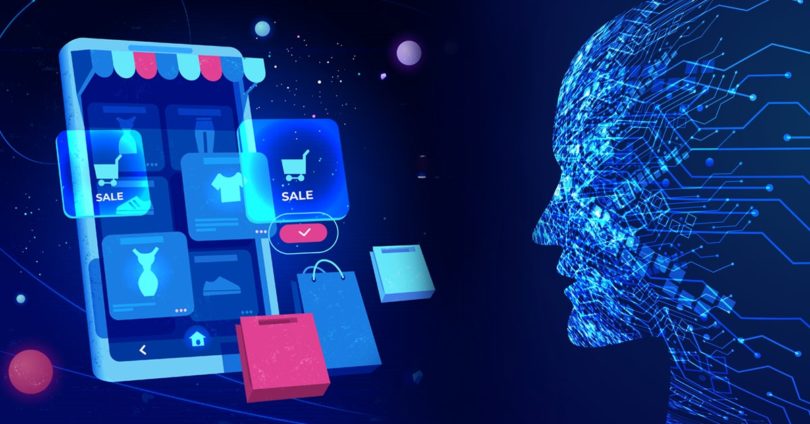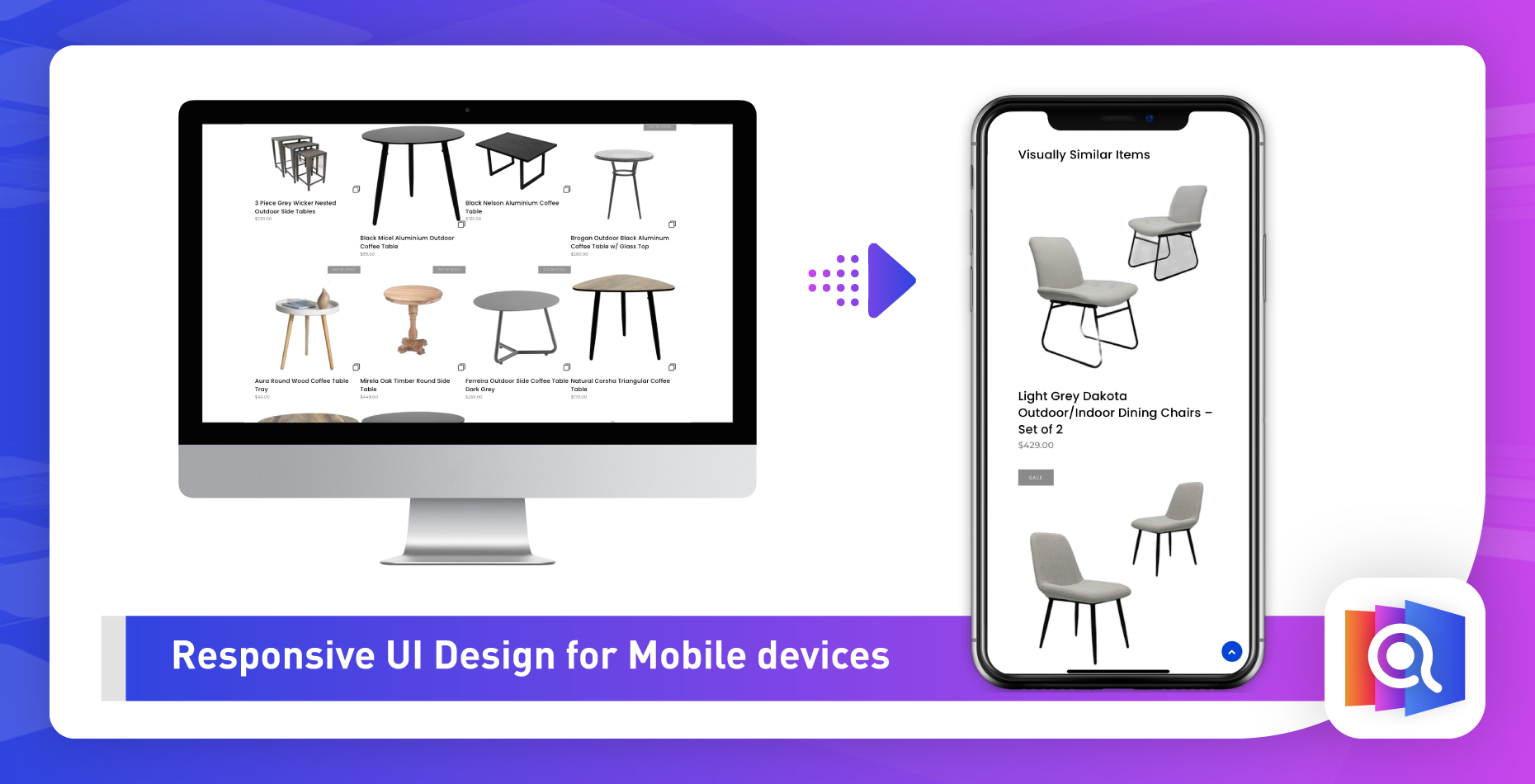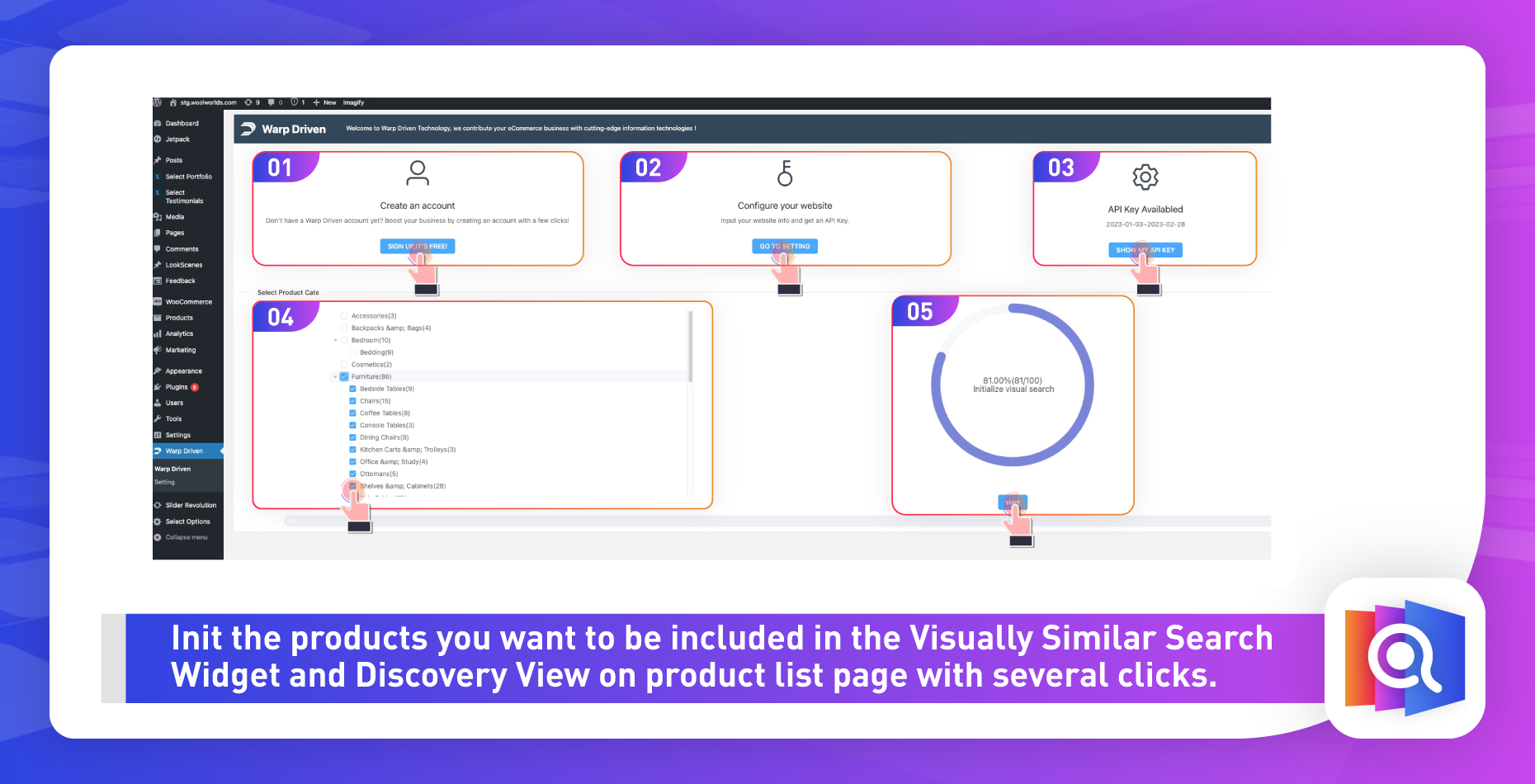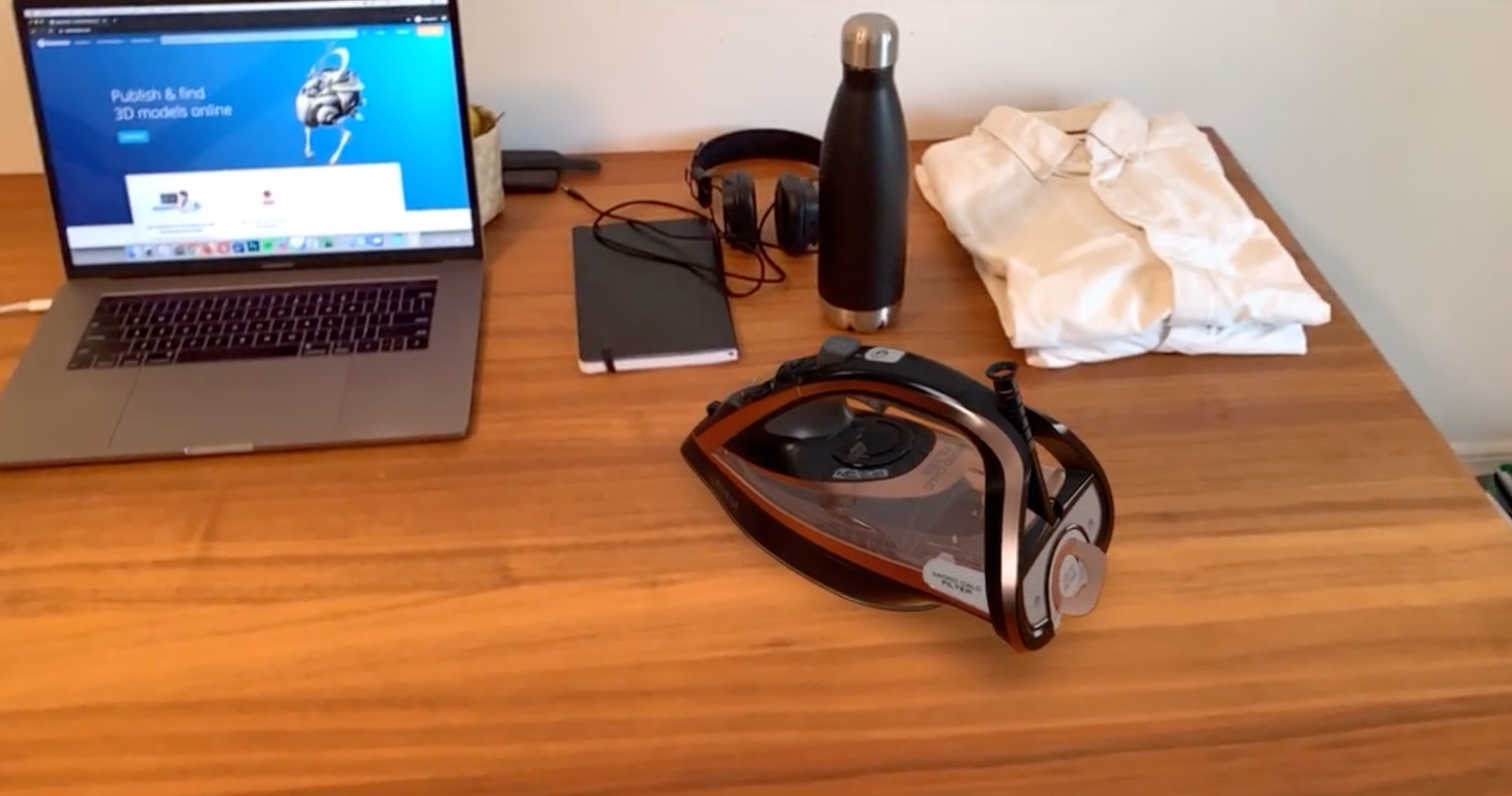
Visual AI for ecommerce involves using computer vision technology to enable automated product tagging and categorisation, visual search, image recognition, and product recommendation. This technology can be used to improve user experience and provide more personalised search results. AI-driven visual search can enable shoppers to quickly find products using an image of the item, rather than having to manually type out keywords. Similarly, product recommendation can use visual similarities between products to suggest similar items to users, helping them to discover products they may not have otherwise seen. AI-driven image recognition and product tagging can also be used to enable automated categorisation and sorting of products, allowing retailers to more efficiently manage their inventories.
- 360 Degree Product Show
- Visually Similar Recommendations
- Scene-based Visual Search
- Uploaded Image Search
- 3D Product AR
The 360 degree product show is a revolutionary new way to showcase your product. By using interactive 3D visuals, customers are able to get a realistic view of your product from all angles. This allows customers to get a better understanding of what they are buying and can help to increase their confidence in the product. The 360 degree product show can also be used to create engaging and informative content, such as product tutorials or product demonstrations. This can help to educate customers and give them an up-close look at the features and benefits of your products. With the 360 degree product show, you can make sure that your customers are getting the most out of their purchase.
Show 360 Degree Product and 3D product in product page demo:
https://woolworlds.com/product/sindri-dining-chairs-set-of-2-black
Visually similar recommendations is a powerful tool that allows users to search for products based on a specific image. The technology uses machine learning algorithms to recognise visual features, such as shape, color, and texture, to provide more accurate search results. This type of search is especially useful for websites that sell products that are not easily describable using natural language, such as home and furniture, apparel, and more.
The technology is easy to use for any website, even those with low traffic, and offers results that are consistent across product searches. In addition, the visual search algorithms of Warp Driven are tailored to all kinds of different industries, meaning that each product will be recognized accurately with pre-trained industrial models. This level of accuracy and consistency makes it easy to find exactly what the user is looking for.
1. Visually Similar Recommendation Widget on product detail page
Show visually similar items on the bottom of the product detail page.

2. Discovery View on product list page
Show visually similar items on the followed windows for the clicked product on product list page including category page or search result page.



We support next eCommerce platforms:
- WordPress Plugin
- Shopify
- Customised UI for all kinds of websites. Contact us
Scene-based visual search is a great way to quickly and easily find the items you want. It allows you to browse products visually, giving you a better idea of what the item looks like in real life. You can quickly search through categories, such as clothes, furniture, and more, to find the perfect matching item you're looking for. Once you've found the item you want, you can add it to your cart with a single click, making it easy to complete your purchase. With scene-based visual search, shoppers can get the items they need quickly and easily, without spending time hunting for the perfect product.
Next image is the editor on the website console to generate a scene image.

Next image is the scene image on the website page, the products on the image can be moved to anywhere or scaled to any size. After clicking one product, on the search widget would show the visually similar products or recommended products.


With uploaded image search, users can select an image from their device or a URL and upload it to the WarpDriven image search engine. The search engine then uses the image as a query and searches visually similar items from its image database. Typically, the search engine will use a pre-trained machine learning model to detect objects in the uploaded image, analyse the objects, and compare it to similar objects in its database. The search engine will then produce a list of items that are visually similar to the uploaded image. From there, users can refine their search further by selecting certain criteria such as price, color, or size, then users can purchase the items right from the search page.


Augmented Reality (AR) has become an invaluable tool for engaging customers with product information. Through AR, customers can experience a product in a 3D environment from any angle and explore it with more clarity than ever before. AR also allows customers to interact with products in a more immersive way, whether it's by virtually assembling a product, seeing how it would look in their environment, or just getting a better understanding of the product overall. Additionally, AR can provide customers with an enhanced educational experience, allowing them to explore product features in greater depth and access how-to guides and other supplemental information. With AR, customers can get a comprehensive understanding of a product in a fraction of the time and with less effort, while creating an enjoyable and interactive experience.
3D product AR(augmented reality) building from pure images involves creating a 3D model of a product by analyzing and processing multiple 2D images of the product from different angles. This technique is also known as photogrammetry. The resulting 3D model can then be used in augmented reality applications to allow users to view and interact with a virtual version of the product in a real-world environment.
The main difference between this technique and traditional 3D modeling is that 3D product AR building from pure images does not require manual modeling, which can be time-consuming and requires specialized skills. Instead, it relies on computer algorithms to automatically create a 3D model from multiple 2D images. However, this technique may not always result in a highly accurate or detailed 3D model, especially when the input images are low-quality or do not provide enough coverage of the product's details.
Next 3D models were built up by Warp Driven Technology with the images took by mobile phone camera.
You can view above 3D models in Virtual Reality using a VR headset (such as the HTC Vive or Oculus Rift) and a compatible browser. Or view it in your mobile phone wit a Cardboard or similar devices.

The 3D models can show in any reality scenes like the iron in the next image.

There are several ways to improve the quality of a 3D model created using photogrammetry from pure images:
- Capturing high-quality images: Ensure that the input images are of high resolution, well-lit, and provide sufficient coverage of the product from different angles.
- Increasing the number of input images: Capturing more images of the product from different angles can improve the accuracy and level of detail of the resulting 3D model.
- Using a structured light scanner: This is a device that projects a pattern onto the object being scanned, which can help capture more accurate depth information and improve the quality of the 3D model.
- Using markers or targets: Placing markers or targets on the product being scanned can help the photogrammetry software to better identify and match the different images, resulting in a more accurate and detailed 3D model.
- Post-processing: After the 3D model is generated, it can be refined using post-processing techniques such as mesh smoothing, texture mapping, and filling in holes and gaps.
By employing these techniques, it is possible to create high-quality 3D models using photogrammetry from pure images. However, it is important to keep in mind that the quality of the resulting model will still depend on factors such as the complexity of the object being scanned and the accuracy of the photogrammetry software being used.
